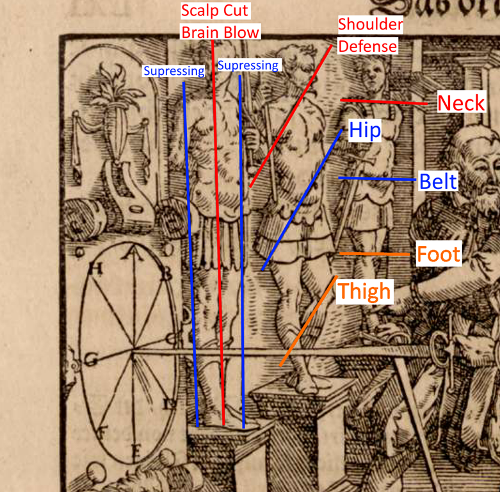Rappier
While it is tempting to translate this weapon as “rapier”, its use bears only a superficial resemblance to the classical rapiers as we now think of them. A more accurate description of this weapon would be sidesword; a cut and thrust sword popular across the continent at the time, and showing the beginnings of the complex hilts which would become a defining characteristic of rapiers.
As such the Meyer rappier syllabus is a broadly cut and thrust method which shares a large amount of common terminology with the longsword and dussack. Meyer also tells us that the rappier is a foreign art lately come to Germany, and in this respect we can make some comparisons between Meyer's system and Italian styles such as those of Marozzo or Viggiani. For such a comparison see [1]
Contents |
Guards
- Nebenhut (side guard
- Wechsel (change guard)
- Ochs (ox)
- Eisenport (iron gate)
- Langort (long point)
- Pflug (plough)
- Oberhut (high guard)
Parries
- Slicing Off
- Suppressing
- Going Through
- Setting Off
- Hanging
- Taking Out (with the half edge)
Strikes
Meyer uses the following cutting lines diagram in his text while describing various techniques.
Thrusts
Principal Cuts
- Oberhauw (high cut)
- Unterhauw (low cut)
- Mittelhauw (middle cut)
- Zornhauw (wrath cut)
Secondary Cuts
Derived from High Cut
- Scheitelhauw (squinting strike)
- Dempffhauw (suppressing strike)
Derived from Zornhauw
- Achselhauw (Shoulder Cut) or Wehrstreich (Defence Strike)
- Huffthauw (Hip Cut)
- Schenckelhauw (Thigh Cut)
Derived from Mittelhauw
- Halßhauw (Neck Cut)
- Gurtelhauw (Belt Cut)
- Fußhauw (Foot Cut)
